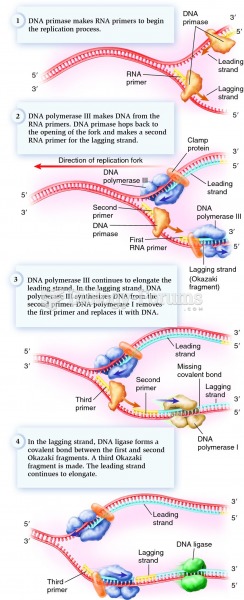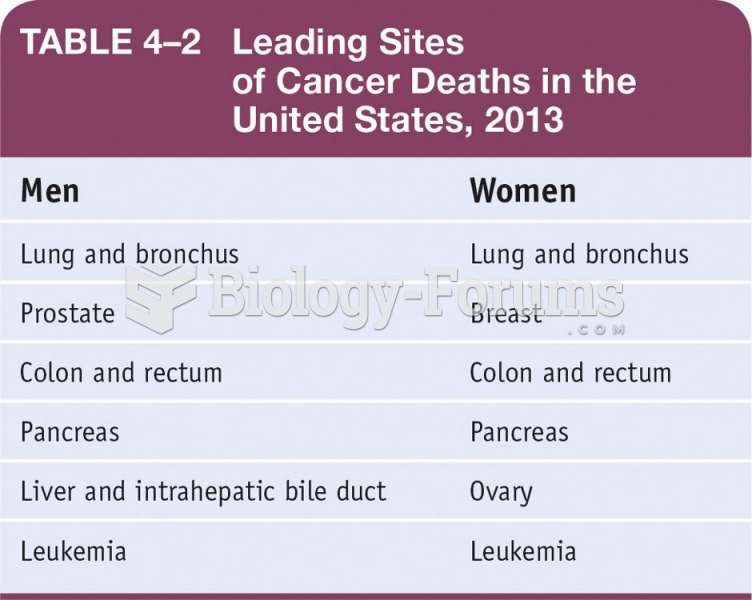|
|
|
Cutaneous mucormycosis is a rare fungal infection that has been fatal in at least 29% of cases, and in as many as 83% of cases, depending on the patient's health prior to infection. It has occurred often after natural disasters such as tornados, and early treatment is essential.
Giardia is one of the most common intestinal parasites worldwide, and infects up to 20% of the world population, mostly in poorer countries with inadequate sanitation. Infections are most common in children, though chronic Giardia is more common in adults.
Cyanide works by making the human body unable to use oxygen.
In 1844, Charles Goodyear obtained the first patent for a rubber condom.
Urine turns bright yellow if larger than normal amounts of certain substances are consumed; one of these substances is asparagus.







